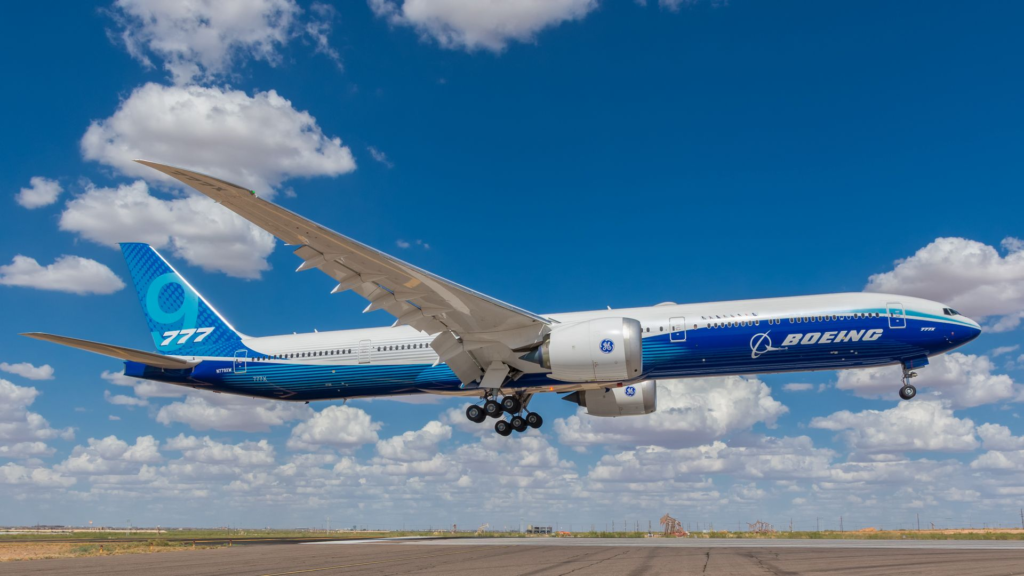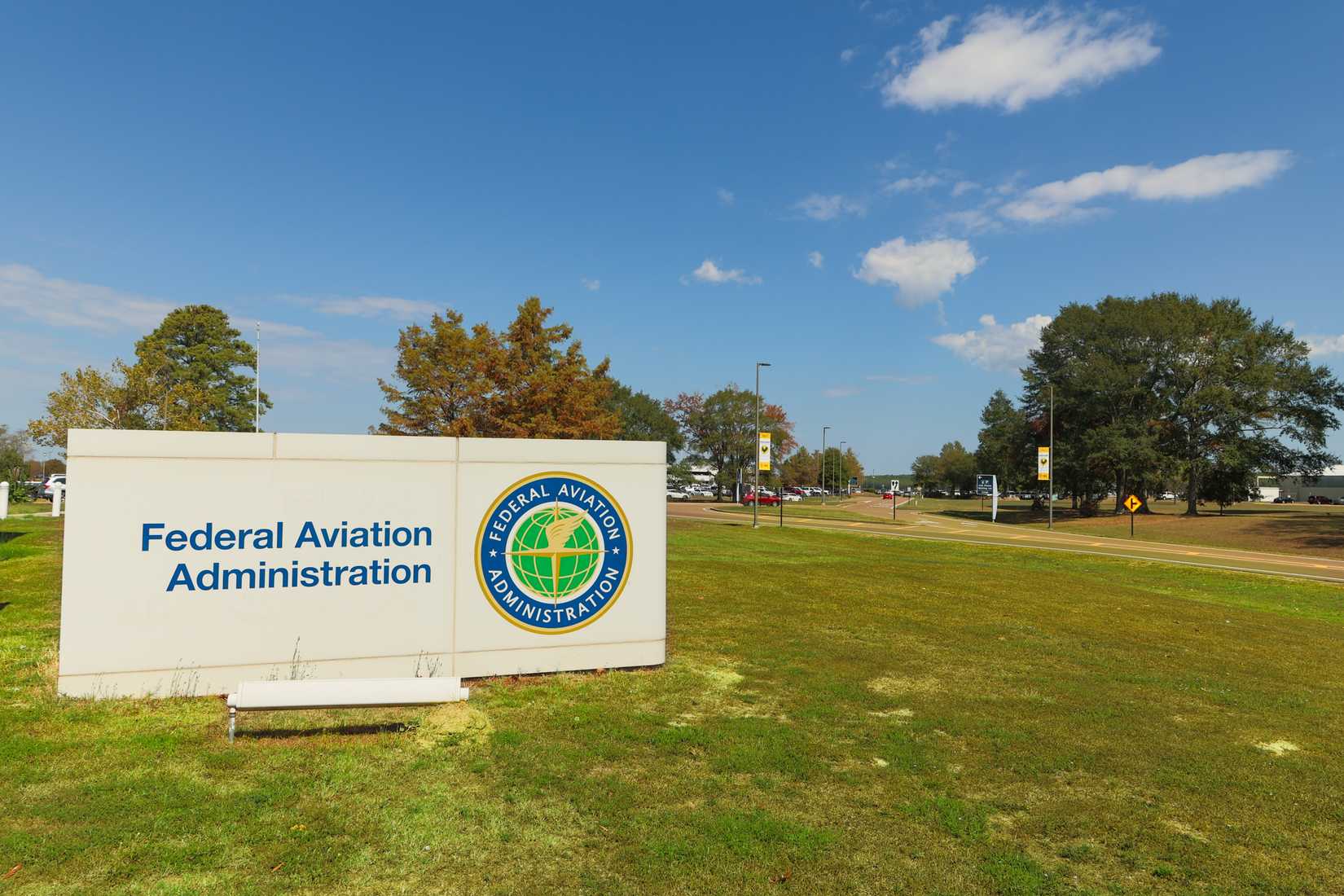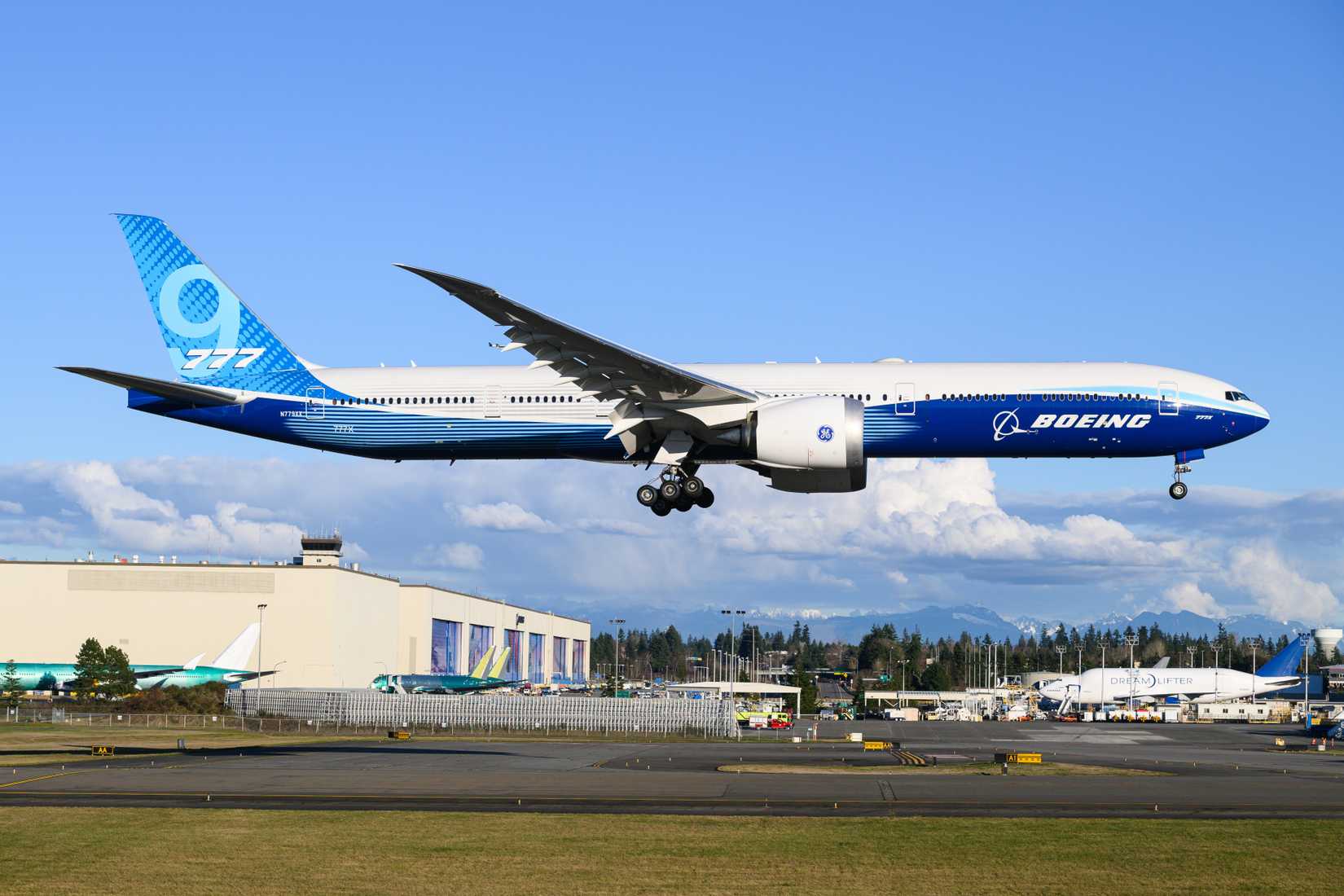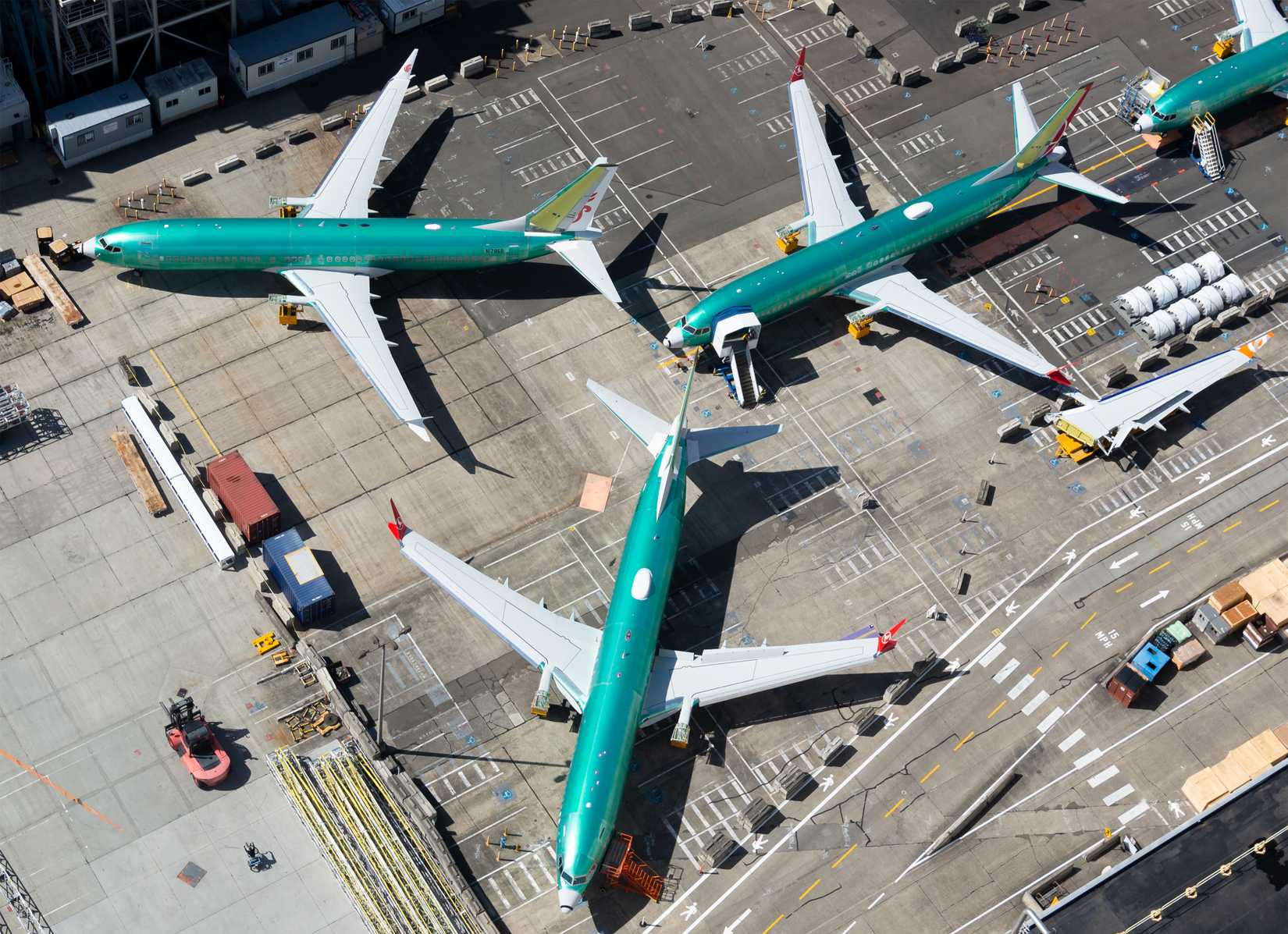The Federal Aviation Administration (FAA) is updating how it certifies new commercial airplanes to make the process faster, cheaper, and more aligned with international standards, all while keeping (or even enhancing) safety. For passengers, these changes could influence when airlines introduce new aircraft, which models you fly on, and how quickly innovations in comfort, efficiency, and safety are implemented. In this guide, we’ll explain what these changes are, why the FAA believes they’re needed, how they relate to recent certification issues like with Boeing’s 777X and 737 MAX 7, and what this could mean for your next flight.
- Stock Code
-
BA
- Business Type
-
Planemaker
- Date Founded
-
July 15, 1916
- CEO
-
Kelly Ortberg
- Headquarters Location
-
Chicago, USA
- Key Product Lines
-
Boeing 737, Boeing 747, Boeing 757, Boeing 767, Boeing 777, Boeing 787
Aircraft certification is one of the longest processes in developing and delivering new planes. Regulators like the FAA set very high safety standards, and manufacturers must show compliance via many tests, design reviews, inspections, etc. Over time, both industry and regulators have acknowledged that some of the rules, procedures, or requirements have become slow, expensive, or duplicative, especially as aircraft design becomes more complex (more electronics, more integrated systems, more environmental / noise regulations).
The FAA’s latest proposal, as first reported by Reuters, which is expected by December 2025, is meant to modernize the certification standards for “transport category airplanes and propulsion systems,” reduce exemptions and special conditions, and harmonize with global norms.
What Exactly Is Being Proposed, And What “Speeding Up Certification” Means
When people say the FAA wants to “speed up certification,” it does not mean cutting corners on safety, as one might think. Instead, the proposal focuses on streamlining bureaucratic bottlenecks: fewer exceptional rules (such as special conditions, exemptions, or equivalent level of safety findings), clearer guidance on design changes, and greater international alignment of regulations, resulting in less redundant work. These changes are part of “certification reform” efforts already underway, as described by the FAA.
For example, the FAA has been expanding its use of Technical Advisory Boards (TABs), groups of internal and external experts who review certification projects early and independently. This helps flag risk early, coordinate complex system safety assessments, and avoid surprises late in the process. The FAA also has policies requiring applicants (aircraft manufacturers) to disclose, early in the certification process, all new systems or changes to systems, and to evaluate design changes consistently.
Another piece is reducing reliance on “exemptions, special conditions, and equivalent levels of safety findings.” These are often needed now when a new design or technology doesn’t neatly fit existing regulations. Each exemption or special condition adds to the review time, complexity, and sometimes requires negotiation. By modernizing standards (rewriting or updating them) to cover more designs directly, the FAA hopes to reduce the added overhead. The proposal also aims to harmonize FAA standards with international ones, so that aircraft certified elsewhere don’t need duplicative work to satisfy US rules.
Why The FAA Wants These Changes Now
Several drivers are urging the FAA to speed up certification, citing delays in current aircraft programs, cost pressures (both for manufacturers and ultimately for airlines and consumers), rapid technological advancements, safety oversight concerns, and a regulatory environment many see as lagging behind global counterparts. Additionally, recent aircraft programs have demonstrated how delays and regulatory complexities can lead to financial losses and customer frustration.
Take the 777X program. Initially launched in 2013 with an expected first delivery around 2020, it has been delayed multiple times. As of 2025, Boeing is still working on certification, but it is falling behind schedule, especially because certain approvals, like Type Inspection Authorizations for specific tests, are being granted slowly.
Some delays are due to technical or supply chain issues. Others are regulatory, such as ensuring test results meet the FAA’s increasingly strict review process and managing the large backlog of work in testing, inspection, and compliance.
Similarly, the 737 MAX 7 has been delayed due to an engine anti-ice system issue: its design, testing, and FAA review have taken longer than Boeing initially anticipated. Boeing originally aimed for certification around 2022, but that timeline was missed. By mid-2025, Southwest and other airlines expect approval no earlier than late 2026. The delay in certifying the MAX 7 also impacts the schedule for the MAX 10.
Comparison of Key Certification Delays
|
Aircraft Model |
Original Expected Certification / Entry into Service |
Current Expected Certification / Delivery |
Main Factors Causing Delay |
|
Boeing 777X (777-9 variant) |
2020 |
2026 (possible later) |
Engine-wing pylon structural issues; interruptions/delays in test flight program; slow type inspection authorizations; regulatory review complexity. |
|
Boeing 737 MAX 7 |
2022 |
Late 2026 or thereabouts |
Engine anti-ice system issues; design changes; FAA safety/system review; requirement for demonstrable safety fixes before certification. |
|
Boeing 737 MAX 10 |
Initially expected in 2024 (or near that for certification and first deliveries) |
Certification delayed to 2026 after MAX 7 |
Like the MAX 7, major delays stem from issues with the engine anti-ice (EAI) system: overheating concerns, potential structural risk in the engine inlet/cowl under certain conditions; unresolved fixes/design changes; requirement that MAX 7 be certified first in some regulatory sequences; supply chain/manufacturing stability; FAA’s regulatory oversight regarding defects and safety. |
These delays are expensive, not just for Boeing, but also for airlines planning their fleets, lessors, supply chain companies, and passengers (who must wait years for a new aircraft with improved fuel efficiency, lower emissions, quieter engines, or updated cabin features to arrive). They also raise the risk of cost overruns.
The FAA, aware of past scrutiny (e.g., following the 737 MAX incidents or issues with the 787 production line and other programs), is likely also under pressure from Congress, industry, and the public to demonstrate that its oversight and regulation are effective, timely, and transparent. The proposed changes probably partly respond to these pressures.
What’s Already Changing: FAA Certification Reform Efforts In Motion
Even before the December 2025 proposal, the FAA has not been standing still. Several reforms have already been implemented or are underway, which illustrate what’s changing and where the FAA is testing or already applying more modern or efficient processes.
A significant effort is focused on how the FAA manages delegation, which involves balancing the certification work that manufacturers can perform with the tasks that FAA staff must complete themselves. The FAA has been adjusting the level of responsibility given to manufacturers through the ODA (Organization Designation Authorization) process, increasing oversight when necessary, implementing additional internal controls, and conducting more independent safety reviews.
Another update is the new policies on how design changes are evaluated: the FAA requires that design changes be considered “major” if they significantly affect airworthiness characteristics, provides more explicit guidance on identifying safety-critical information, and mandates early, upfront disclosure of all systems and changes at the start of a certification or amendment process.
The FAA has also adopted several new guidance documents, improved the tabulation of safety experts, expanded Technical Advisory Boards, and sought to standardize safety assessment criteria so that modern, complex aircraft systems (e.g., integrated avionics, fly-by-wire) are evaluated uniformly, rather than under different, older rules.
These ongoing reforms act as both test cases and early successes, helping identify which parts of the certification process are most likely to cause delays, spot outdated or conflicting rules, and determine which types of oversight add value versus those that could be reworked. It seems the FAA aims to update its rules and procedures while also streamlining internal reviews, type inspections, and test authorizations. For aircraft manufacturers, these changes provide greater predictability; for regulators, a better ability to identify issues early; and for airlines and, ultimately, passengers, less waiting for new models.
How Do The Boeing Certification Cases Illustrate Where The System Is Fraying?
The certification challenges of Boeing’s 777X and the 737 MAX 7 and MAX 10 highlight the types of obstacles the FAA’s proposed reforms aim to address, including technicalities, regulatory, procedural, and safety issues, all contributing to delays in delivery.
With the 777X, Boeing has encountered multiple delays: structural issues (e.g., pylon attachments between wing and engine), interruptions in test flights, and a more exacting regulatory scrutiny under newer FAA policies. Boeing’s CEO has acknowledged that while test flying hasn’t revealed fundamentally new technical defects, the regulatory work (type inspection authorizations, design maturity reviews, etc.) is catching up, and that schedule slips are mounting, so the negative financial impact is mounting.
For the 737 MAX 7, significant delays have focused on an engine anti-ice system issue that Boeing initially thought might need a safety exemption. That request was withdrawn after review. The process of redesigning, testing, FAA reviewing, and resolving safety-critical data extended the timeline by months or even years. The delay of the MAX 7 also causes a ripple effect: since it must be certified before the MAX 10 (according to the FAA’s schedule), the delay pushes back the larger model. Airlines that ordered MAX 7 or MAX 10 have had to revise their fleet plans accordingly.
These real-world examples show that delays arise not only from hardware or engineering challenges, but also from regulatory review, safety culture, oversight, and ensuring that every system, change, test, or design tweak is fully accounted for under the FAA’s rules. Reforms that aim to reduce redundant or overlapping reviews, give clearer guidance earlier, and ensure consistency in standards may help avoid some of these bottlenecks. However, some delays are inevitable, especially for very complex airplanes like widebodies or those introducing new technologies.
What This Means For Passengers: Your Next Flight And Beyond
So, if you’re a traveler, what do all these regulatory and certification delays and proposals really mean? Will your flight be delayed, or will you notice slower service? Probably not directly, but there are indirect and long-term effects to watch for.
In the near term, most airlines will continue using existing aircraft types. Companies usually deploy new models, like the 777X or updated versions of the 737 MAX, only after they are certified and delivered. Delays mean you probably won’t see these new planes as soon as manufacturers hope. If FAA reforms succeed, newer and more efficient planes could enter service sooner, offering potential benefits such as fuel savings (and possibly lower costs or fares), quieter cabins, better environmental performance, and more modern features like improved entertainment and air quality.
You might also notice airlines planning their fleets more cautiously. For example, they might postpone ordering or switching aircraft types until regulatory and certification risks become clearer. Sometimes, maintenance or retrofits on existing planes will take longer or cost more if replacement models are delayed.
Another passenger-facing effect could be on international flights: harmonization of standards could make it easier for foreign-built aircraft to enter the US market. That might increase competition or the variety of aircraft. Also, airlines might invest more in safety, documentation transparency, or monitoring systems (because the FAA is pushing for more oversight earlier). For frequent flyers, this might translate into improved reliability of new aircraft, fewer delivery delays, and perhaps faster adoption of new safety or environmental features.
Challenges, Trade-offs, And What To Expect Going Forward
Although speeding up certification may sound attractive, it poses several challenges. Regulators must strike a balance between speed and safety, as rushing could lead to oversight gaps or missed interactions between systems. There may also be resistance or inertia from parts of the industry used to older methods, along with increased legal, safety, and technical scrutiny, especially following past accidents or regulatory failures.
For the FAA, success will likely depend on how the December 2025 proposals are written, how much stakeholder feedback influences them, how effectively the new standards reduce redundancy without causing ambiguity, and how well the FAA can resolve test authorizations, improve internal staffing or oversight, and keep pace with technological advancements. For manufacturers like ![]() Boeing, it means better upfront design maturity, early engagement with regulators, more rigorous internal testing and documentation, and likely dealing with the FAA’s stricter review processes.
Boeing, it means better upfront design maturity, early engagement with regulators, more rigorous internal testing and documentation, and likely dealing with the FAA’s stricter review processes.
Looking ahead, we may see a shift where new aircraft programs are planned with the regulatory route more fully mapped out from the outset, designed in ways that conform to modern standards rather than requiring retrofitting or obtaining numerous exemptions. Fans of aviation safety will watch to see whether the FAA’s reforms truly reduce delays, so that projects like the 777X, 737 MAX 7, and MAX 10 are delivered closer to their original expectations. And if that happens, your future flights may feature new airplanes sooner, with better efficiency, lower emissions, and perhaps a better passenger experience.








